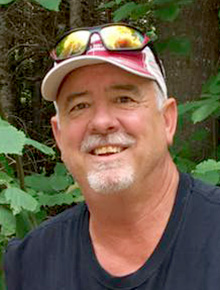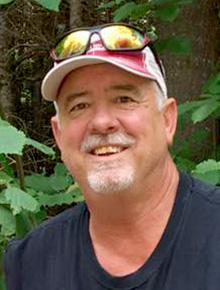
My weekly wildlife rides are turning into five-days-a-week wildlife rides this time of year, with my binoculars and a thermos full of coffee looking at all the waterfowl passing through my area.
I get to see all kinds of duck and goose species that I never get to see except during their spring migration.
Some of my earlier columns this year were about wood duck nesting structures and facts and information on the cavity nesting ducks I find so interesting. The plans for those are still available if you would like them. Just reach out to me at scottarall@gmail.com and I will send them to you. I have forwarded them about 15 times to different readers over the past few weeks.
There is an acronym called NAWCA. This stands for the North American Wetlands Conservation Act. It was a piece of federal legislation passed over 30 years ago that has been responsible in great part for the success of waterfowl species across North America.
It integrates and disperses a large portion of the federal dollars spent to conserve wetlands and other critically important wildlife habitat not just for ducks but a whole array of game and non-game species that utilize wetlands and their associated uplands for their survival.
In fact, since its inception in 1989 there have been over 2,833 NAWCA projects. The federal dollars expended, $1.6 billion to be exact, were matched with over $4.68 billion from partner agencies and individuals to protect and preserve over 29.8 million acres of critical wetlands habitats.
The single most successful part of the NAWCA program is that all federal monies expended have to be matched at least 1-1. As you can see, the match is actually about 3-1. It is this leverage that makes the NAWCA one of the most successful and efficient programs available today.
They have completed projects all over the United States and utilize a grants program that state agencies, conservation organizations and wildlife departments can apply for.
My Pheasants Forever chapter in Nobles County has utilized some of these dollars to acquire and protect the few natural wetlands that still exist in the intensely farmed areas of southwest Minnesota. I can only imagine what this country looked like before the invention of perforated farm drainage tile.
Over 95 percent of the native prairie and wetlands that once existed in the prairie pothole region of the state are now gone. I find it interesting to see how God’s creatures have adapted to the changing landscape over the past 200 years.
The original landscapes of the prairies have existed for about the past 10,000 years. Waterfowl have migrated to their nesting grounds for those 10,000 years and what they fly over today can look nothing like it once did. They still manage to carry out their migrations and successfully reproduce the next generations of waterfowl.
Can you imagine flying over herds of buffalo that numbered in the millions.
A quick search of projects in Minnesota shows $46.8 million in federal funds has been matched with $176.1 million match money to compete 135 projects totally over 235,628 acres in this state alone.
One of the biggest and most successful organization to utilize NAWCA dollars is Ducks Unlimited. The state manager for Minnesota’s’ Ducks Unlimited is a great guy by the name of John Schneider.
I have known John for over 10 years, and he is one of the greatest wildlife professionals I know and can call my friend.
Ducks Unlimited in Minnesota has what they call a Shallow Lakes Initiative to restore lost wetlands and make those that remain the best they can be.
Ducks Unlimited has received money from the Minnesota Land and Legacy Fund. This is the sales tax money that is spent on conservation in Minnesota.
I sat on Lessard-Sams Outdoor Heritage Council for six years and helped direct these funds, and this is where I came to understand the role of Ducks Unlimited in wetland protection and restoration in my state.
With NAWCA, LSOHC, and Ducks Unlimited, there has been significant improvement.
The next time you see some beautiful waterfowl resting as they migrate, say a kind word for the NAWCA, LSOHC and thank Ducks Unlimited for their work to protect and preserve what few wetlands we have left.
Scott Rall, Worthington, is a habitat conservationist, avid hunting and fishing enthusiast and is president of Nobles County Pheasants Forever. He can be reached at scottarall@gmail.com. or on Twitter @habitat champion.



